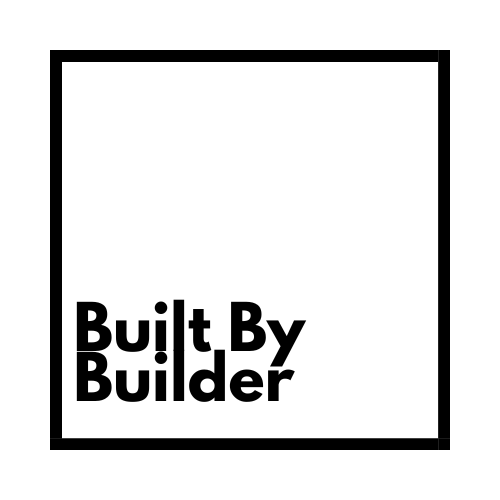table of contents
- Introduction
- Understanding Nodejs
- Introducing Bun js
- Preparing for Migration
- Choosing the Right Migration Strategy
- Updating Dependencies and Packages
- Adapting Your Codebase
- Testing and Quality Assurance
- Data Migration
- Updating Deployment and Hosting
- Post-Migration Optimization
- Training and Team Transition
- Conclusion
The success and stability of your projects depend on your ability to stay updated with new technological developments. Nodejs has been a popular runtime environment for server-side JavaScript applications, but there comes a time when you might consider migrating to a more modern and efficient solution like Bun js.
Understanding Nodejs
Nodejs has been the go-to choice for many developers, thanks to its speed, scalability, and the vast ecosystem of packages available through npm (Node Package Manager).
Nodejs is single-threaded, which can lead to performance bottlenecks in CPU-bound applications. Additionally, the management of dependencies and the event-driven nature of Nodejs can become complex in larger projects.
Introducing Bun js
Bun js is a modern JavaScript runtime that addresses many of the shortcomings of Nodejs. It provides better performance, improved concurrency handling, and simplified package management. Before diving into the migration process, it's essential to grasp what Bun js offers and how it differs from Nodejs.
Bun js is designed to be highly modular and can efficiently handle large codebases. It offers enhanced support for ES modules and a more straightforward approach to package management, making it an attractive choice for modern web development.
Preparing for Migration
Before you embark on the migration journey, it's vital to prepare adequately. Start by assessing your existing Nodejs project. Determine the reasons for migration, whether it's performance improvements, enhanced scalability, or access to new features.
Set clear objectives and goals for the migration process. Knowing what you want to achieve will guide your decisions throughout the project.
Choosing the Right Migration Strategy
There are different migration strategies to consider when moving from Nodejs to Bun js. You can opt for a gradual migration, where you gradually replace parts of your application with Bun js components, or an all-at-once migration, where you switch your entire codebase to Bun js. The choice depends on your project's complexity and requirements.
Planning is crucial, no matter which strategy you choose. Create a detailed migration plan that outlines the steps, timeline, and responsibilities.
Updating Dependencies and Packages
A significant aspect of migrating to Bun js is updating your project's dependencies and packages. Start by reviewing the dependencies in your Nodejs project. Identify any packages that may have compatibility issues with Bun js, and ensure they are up to date.
Here's an example of how you can update your dependencies :
Using npm:
npm updateUsing bun:
bun updateAdapting Your Codebase
Migrating to Bun js may require adjustments to your codebase. You'll need to address breaking changes and deprecated features. This phase is an excellent opportunity to refactor and improve the overall code quality.
For example, if you have code that relies on Nodejs-specific APIs, you'll need to replace them with Bun js equivalents. Here's an example of adapting a Nodejs-specific file system operation:
Nodejs code:
const fs = require('fs');
fs.readFile('file.txt', 'utf8', (err, data) => {
if (err) throw err;
console.log(data);
});
Bun js code:
import { readFile } from 'fs/promises';
async function readTextFile() {
try {
const data = await readFile('file.txt', 'utf8');
console.log(data);
} catch (error) {
console.error(error);
}
}
readTextFile();Testing and Quality Assurance
Rigorous testing is crucial during the migration process. Utilize automated testing tools designed for Bun js to ensure your application functions correctly. Pay close attention to functionality, performance, and compatibility with different browsers.
Consider using testing frameworks like Jest for your Bun js project:
npm install jestOr:
bun install jestData Migration
If your project involves databases, consider how you'll migrate your data. Data integrity and consistency are paramount. Plan the migration to minimize downtime and ensure a smooth transition.
For example, if you're using a MongoDB database in your Nodejs project, you'll need to plan and execute a data migration strategy specific to MongoDB.
Updating Deployment and Hosting
Your hosting environment may need adjustments to accommodate Bun js. Configure your deployment process to work seamlessly with Bun js, and follow best practices for deploying modern web applications.
For instance, if you're using a platform like Heroku for deployment, you'll need to update your build and start scripts in your package.json file to reflect the Bun js setup.
"scripts": {
"start": "bun dev",
"build": "bun build"
}Post-Migration Optimization
Once the migration is complete, focus on optimizing your application's performance. Monitor and profile your application to identify bottlenecks and areas for improvement. Be prepared to handle any issues that may arise after the migration.
You can use performance monitoring tools like Lighthouse to assess your Bun js application's performance and make necessary optimizations.
Training and Team Transition
Don't forget to invest in training your development team on Bun js. Knowledge transfer is essential for a smooth transition, and you want your team to be well-prepared to work with the new technology.
Consider providing training sessions or workshops on Bun js fundamentals and best practices. Encourage your team to explore Bun js documentation and resources.
Conclusion
Migrating from Nodejs to Bun js is a strategic decision that can lead to improved performance, scalability, and maintainability of your web applications. By following the steps outlined in this article and adapting them to your specific project, you can ensure a successful migration process. Embrace the future of web development with Bun js.
FAQs (Frequently Asked Questions)
-
Why should I migrate from Nodejs to Bun js? Migrating to Bun js offers better performance, improved concurrency handling, and simplified package management, making it a compelling choice for modern web development.
-
Is it possible to migrate gradually from Nodejs to Bun js? Yes, you can opt for a gradual migration strategy, where you replace parts of your application with Bun js components over time.
-
What are the key challenges in migrating to Bun js? Challenges may include updating dependencies, adapting the codebase, and ensuring data migration with minimal downtime.
-
Can I still use my existing Nodejs modules in Bun js? Yes, Bun js provides support for Nodejs modules, allowing you to reuse some of your existing code.
-
How can I keep my development team up-to-date with Bun js? Invest in training and knowledge transfer to ensure your team is well-prepared to work with Bun js.
This article is originally written by BuiltByBuilder Team.

